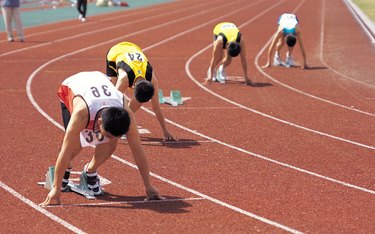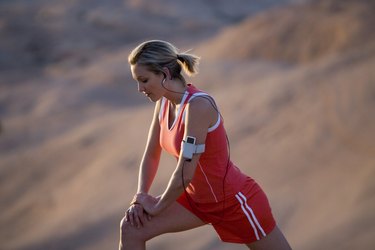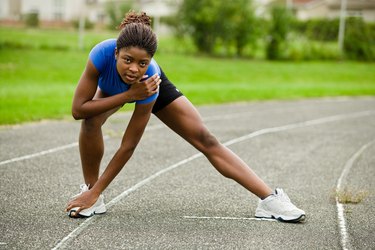
If you are new to running, it is entirely normal to experience a certain amount of aches and pains. Though soreness can be a positive sign of muscle growth and development, it could hinder your training program. If you are feeling excessive and unwanted soreness, there are several simple things you can do to get you back on your feet.
Upper-Body Form
Video of the Day

If your running sessions are causing soreness in your neck, shoulders, arms or back, then it is likely that something is wrong with your running form. As you run, your upper-body should be relaxed. Let your arms swing loosely and naturally with the motion of your legs. Your shoulders should be held back in a good postural position, and your chest should be forward and open to allow for easy breathing. Keep your neck in a neutral position and face directly ahead. Pay attention to these details the next time you run.
Video of the Day
Leg Soreness Cause and Treatment

All runners experience soreness in their legs at some point, and this is not usually something to worry about. Two main factors cause muscle soreness. After a run, lactic acid builds up in the leg muscles and can cause soreness. Performing light cool-downs immediately following a run can help mitigate the accumulation of acid and ease muscle soreness. Soreness two to three days after running, however, is not caused by lactic acid. It actually stems from swelling that is a natural effect of muscle recovery. Icing can mitigate pain and inflammation, and light activity speeds recovery.
Aches and Footwear
Pain in the feet and knees is a different matter. Aching feet can be a sign that you need to buy new shoes. The wear-and-tear on running shoes is high, and after 300 to 400 miles, they often cannot safely cushion and protect your feet anymore. This can increase stress impact on your joints, especially your knees, or strain the calves or the muscles of your feet. If your shoes are in good condition, then you may need to buy a different type designed to better fit your foot-strike, weight and running style.
Safety Tips

Calf, hamstring, quadriceps and hip stretches can improve your running form and lessen the minor injuries that lead to soreness. Stretch after every run while your muscles are still warm. Overtraining is one of the most common causes of soreness and injury, so be sure to schedule plenty of recovery time and increase your mileage and speed gradually. If the problem persists or worsens, you should seek the advice of a licensed medical professional. If at any time while running you experience sharp or extreme pains, stop immediately and seek medical advice.